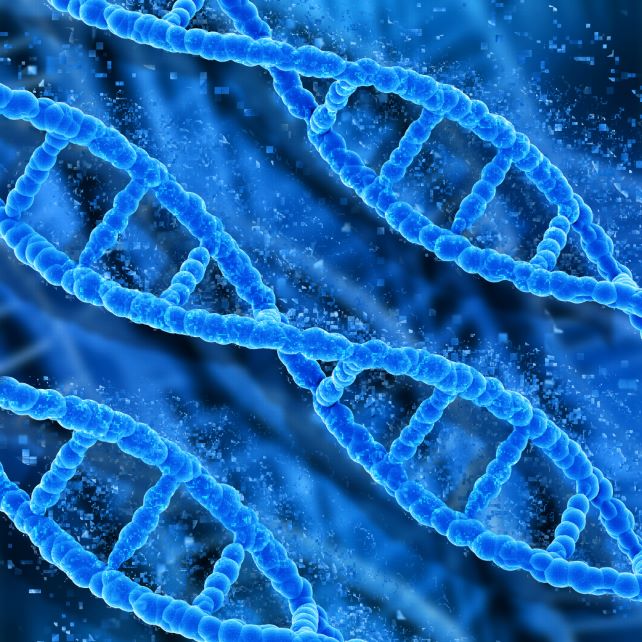 |
| Dr. Gytis Dudas says several potential viruses are capable of causing pandemics, such as avian influenza or coronaviruses—VU photo. |
One of the most significant technological advancements in recent years is artificial intelligence (AI) and its ability to predict protein structures, greatly enhancing our understanding of fundamental biological processes. This breakthrough is critical as it resolves long-standing challenges and creates new opportunities in areas like virus monitoring and pandemic prevention.
However, Vilnius University (VU) Life Sciences Center (LSC) virologist Dr. Gytis Dudas warns that AI could also pave the way for highly dangerous biological scenarios. For instance, it could be used to design highly effective toxins or viruses, potentially more hazardous than their natural counterparts.
Threat of New Pandemics
Scientists are increasingly sounding the alarm about the potential for new pandemics. According to Dr. Dudas, zoonotic spillover - when infectious diseases jump from animals to humans - is a common phenomenon. Thousands of such events occur yearly, but pandemics arise only when a virus can both infect humans and spread efficiently among them.
“Several viruses are capable of causing pandemics, such as avian influenza or coronaviruses. These viruses have already triggered serious epidemics, making monitoring and prevention critically important,” emphasizes the VU LSC scientist.
Genetic sequencing is a primary tool for virus surveillance, which allows researchers to analyze viruses circulating in animal and human populations and identify new variants. Ideally, sequencing devices would be installed in all healthcare facilities to quickly detect previously unknown pathogens.
“For example, if an infected person arrives at a healthcare facility, routine tests might not show anything. However, sequencing can scan the entire genetic material and identify the sequences of a novel virus. This enables early diagnosis, surveillance, and the development of specialized tests,” explains Dr. Dudas.
AI in Pandemic Prevention
AI technologies are valuable not only for virus diagnostics but also for tracking societal behavioral changes. For instance, analyzing Google Trends for increased searches related to respiratory symptoms could signal the early spread of a new disease.
“In the future, anonymized AI systems could monitor human behavior, such as shifts in mobility or purchasing habits in certain regions. Such changes might indicate the onset of infectious disease outbreaks,” the virologist notes.
 |
| Representative image by Freepik |
One major AI achievement in biology is Google DeepMind’s tool for accurately predicting protein structures from genetic sequences. This technology aids in understanding protein functions and interactions with other molecules, including drugs.
Dr Dudas describes this discovery as a seismic shift in science: “Solving such a problem was impossible for decades. This technology enables us to transition from a simple amino acid sequence to a complex 3D structure, unlocking possibilities for new drug development and advanced virus analysis.”
Using AI, it’s also possible to identify novel viruses that significantly differ genetically from known viruses. For example, analyzing a virus enzyme’s 3D structure could reveal its group affiliation, even if its genetic information doesn’t provide clear clues.
Looking to the Future
“AI and genetic sequencing are just the beginning. In the future, we aim to further integrate these technologies into pandemic prevention and public health systems. However, questions about data privacy and ethics remain crucial,” says Dr Dudas.
Reflecting on potential threats, Dr Dudas points to risks in biological research: “For instance, misuse of gene therapy. AI is already being used to develop more efficient gene therapy tools, such as optimizing adeno-associated virus surface proteins to evade immune detection. However, such technologies could also be applied unethically, for example, creating viruses resistant to immunity, which could lead to unforeseen infections.”
 |
| Representative image by Freepik |
Worryingly, AI could also enable the creation of highly dangerous biological tools. For example, it could optimize ricin toxin to be smaller, more effective, and harder to detect. Although developing such bioweapons is complex, hostile states might pursue such technology, despite the challenges of ensuring it wouldn’t harm their own populations.
Dr Dudas outlines additional risks, particularly the potential for pandemics. If AI-designed viruses were accidentally or intentionally released into the environment, they could possess unique features that allow them to spread rapidly and evade control. For instance, modified influenza viruses could become highly contagious and resistant to existing vaccines, making them difficult to manage.
“AI can create entirely new biological structures that self-replicate and evolve unpredictably. These features could exceed the initial intentions of their creators, leading to catastrophic consequences. A significant problem is that legal regulations lag behind these technologies. We’re currently in a sort of ‘Wild West’ phase, where innovations outpace regulations, and risks only become apparent after technologies are applied in practice,” warns Dr Dudas.
Nevertheless, he remains optimistic about AI’s potential: “These technologies allow us to envision a world where pandemic threats can be identified and stopped before they become a reality. Furthermore, there’s hope that as technology becomes more sophisticated and regulations improve, the risk of AI misuse will be reduced, benefiting humanity as a whole.”
